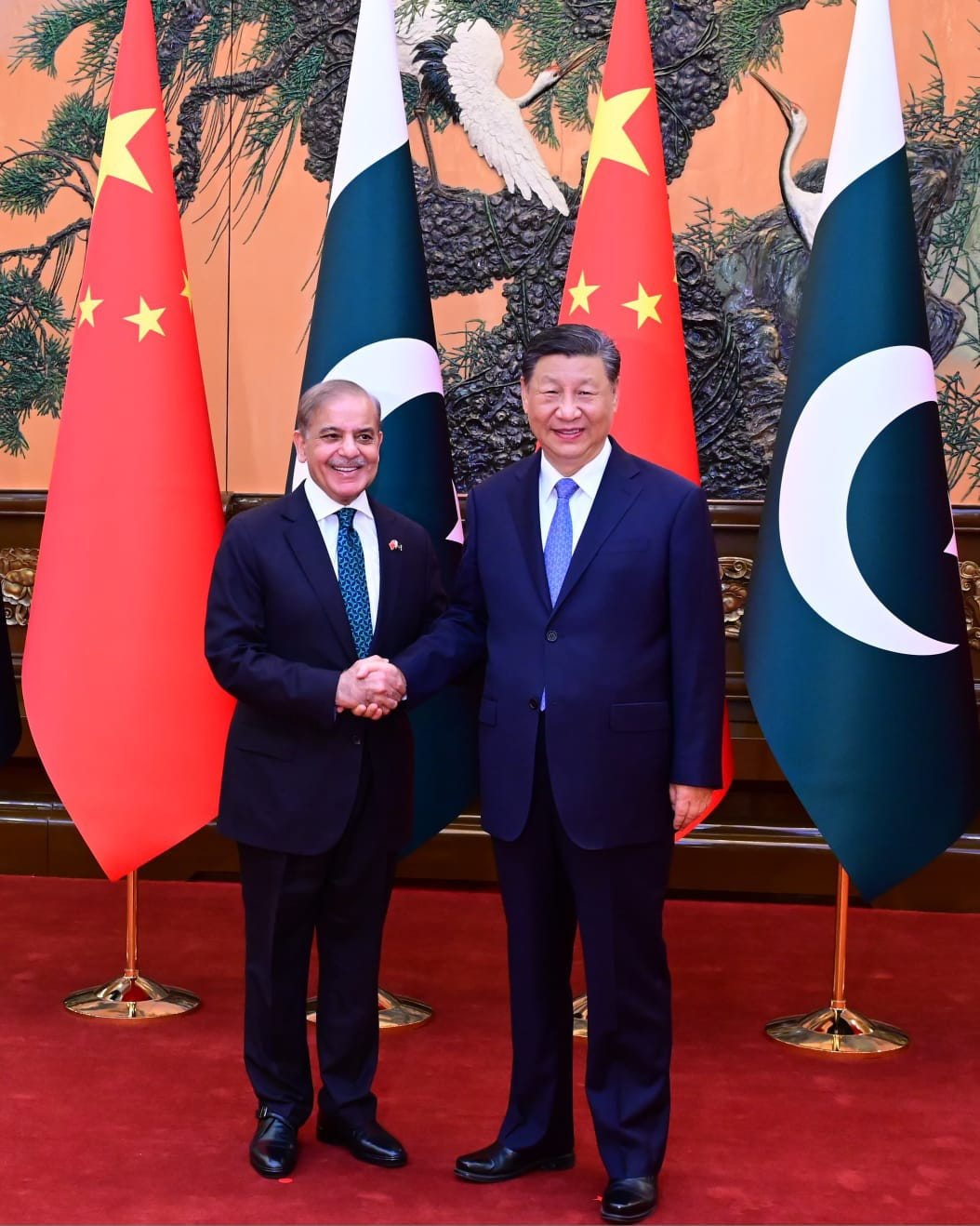Pakistan’s Tightrope Between Washington and Beijing
Islamabad courts Washington while bound to Beijing, but China’s warming ties with India risk making Pakistan expendable.
When Pakistan’s Army Chief, General Asim Munir, traveled to Washington this summer, it was more than a diplomatic courtesy. It was a signal. Islamabad is seeking to reengage Washington even as it remains bound, strategically and materially, to Beijing. For Pakistan, the challenge is not merely about hedging—it is about survival in a shifting Asian chessboard.
Image: Pakistan’s PM Shehbaz Sharif with President Xi Jinping of China
China has long been Pakistan’s “iron brother.” Beijing supplies nearly 80 percent of its defense imports and anchors its infrastructure through the China-Pakistan Economic Corridor (CPEC). Plans for a “CPEC 2.0,” including extensions into Afghanistan, underscore how deeply Pakistan’s economic future is tied to Chinese capital. Yet cracks are visible. Beijing has scaled back financing for the vital Main Line-1 railway, leaving Islamabad scrambling for loans from multilateral banks. More troubling still for Pakistan, China is visibly warming to India—deepening trade links and holding high-level summits. For Islamabad, that is an earthquake in slow motion.
Munir’s Washington outreach is meant to widen Pakistan’s options. U.S. officials remain skeptical but see Pakistan as useful for its geography—bordering Afghanistan, near Iran, and sitting astride sea routes into the Indian Ocean. Yet Washington’s support is limited and transactional. Meanwhile, Pakistan still relies overwhelmingly on Chinese arms and investment. Should Beijing tilt further toward New Delhi, Islamabad risks strategic downgrading.
India is watching closely. New Delhi has protested Munir’s Washington welcome, wary of any revived U.S.–Pakistan axis. At the same time, India has cultivated closer economic ties with Beijing, both to temper uncertainty in Washington and to secure its own leverage. China, for its part, may prefer to hedge—holding Pakistan close militarily while expanding economic opportunities with India.
That leaves Pakistan straddling a fragile line. A tilt too far toward Washington risks alienating Beijing. A lopsided dependence on China could render it irrelevant if Beijing prizes relations with India more.
Our Take: The thin red line here is stark: can Pakistan remain indispensable to both giants without becoming expendable to either? In an era of shifting great-power triangles, Pakistan once again finds itself playing the role it knows best—the swing state of South Asia. But this time, the stakes are higher.

